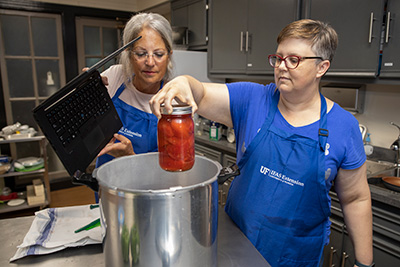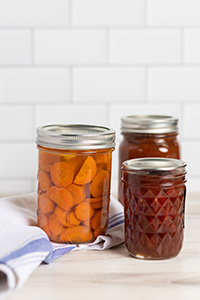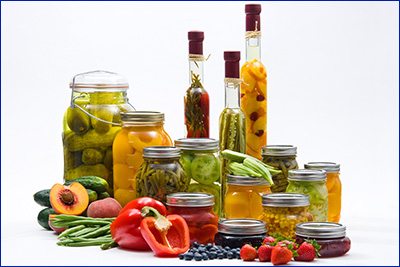Harvesting and Storing Vegetables

Enjoy nutritious vegetables all year by harvesting from your own garden and canning or freezing the surplus.
Harvesting Vegetables
Harvesting your vegetables at the right time is an important part of gardening success. It can be tricky to determine when vegetables are ready to be picked. Harvesting too late or too early is a common problem for vegetable growers, which results in poor quality produce.
Research your vegetables to find out how many days it takes that type to mature. The Florida Vegetable Gardening Guide lists the “days to harvest” for each vegetable listed. Keep track of what date you planted your garden and then count forward based on whether you planted seeds or transplants. Store-purchased seedlings are usually sold when they are about four weeks old. The days to harvest range for each plant is usually accurate. However, each garden has its own microclimate and you’ll want to test a few vegetables from your garden for readiness before you complete a full harvest. Freshness, flavor, and quality of your vegetables depend on the maturity stage of then they are picked.
Harvest vegetables in the cool part of the morning if possible and then store them as soon as possible to preserve freshness. Each vegetable has certain qualities when it is ready to be harvested. For example, winter squash should be harvested when rinds cannot easily be dented by a fingernail and tomatoes should be harvested when in full color and still firm.
Storing Vegetables
There are many different options for storing your vegetables after they’ve been harvested. Most veggies should be put in your refrigerator or eaten within a few hours after being picked. Other options include canning and freezing vegetables you don’t plan on using for a while.
Most crops can be harvested more than once so keep up with gathering at proper maturity. Carefully handle produce after harvesting to avoid bruising or damage which can cause decay. Keep an eye on your plants for signs of yellowing leaves or possible diseases while harvesting. It takes practice and experience to know exactly when your vegetables will be at their peak. Harvest at the right time and you are sure to have a kitchen full of flavorful, nutritional veggies!

Canning
You may can all kinds of fruits and vegetables, from tomatoes to pumpkins. The two methods for canning are the “boiling water bath” method and pressure canning. The boiling water method is appropriate for making jams and jellies, but pressure canning is the only safe way to can vegetables. When canning, it’s important to use foods at the peak of their quality, and be sure to follow the strict canning procedures specified for your product. Before eating your canned foods, look for any signs of spoilage, and remember: canned foods can be as nutritious as fresh produce!
Freezing
Freezing provides an easy way to store the excess harvest. Fruits like strawberries and blueberries can be placed in the freezer in a single layer on a cookie sheet. This allows the fruits to freeze individually. Once frozen, transfer them to a zip-top bag or other plastic container. Fruits can also be packed in a sugar syrup before freezing.
Vegetables usually require an extra step called blanching. You’ll need to boil or steam them for a specific period of time and then plunge them into a cold water bath.
When freezing herbs, wash them well, and then pat them dry. Place them in a single layer on a baking sheet in the freezer. This ensures that they won’t freeze together in one big clump. Transfer the frozen herbs to a labeled, air-tight bag. Herbs like dill, sage, rosemary, and thyme freeze best when left on their stalks. When you’re ready to cook you can add whole stalks and then retrieve them before serving.
Pickling Vegetables

Pickling is an excellent way to preserve vegetables from your garden. Cucumbers are an obvious choice, but don’t forget that green beans, okra, and other vegetables can also be pickled.
You’ll need to gather several items: fresh, clean vegetables, food-safe containers, vinegar, pickling salt, seasonings, and canning supplies.
There are two types of pickles. Brined pickles are cured for several weeks at room temperature and become acidic through the growth of naturally occurring bacteria. Quick pickles are produced using a hot vinegar solution, and take just a few days. Find a recipe that has been tested and follow all of the instructions carefully.
The family and consumer sciences agent at your county Extension office will have answers to your food preservation questions; your county might even hold workshops on canning, pickling and other preservation methods.
